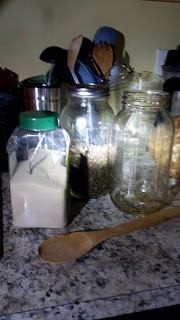Once the kombucha has reached the level of sweetness and effervescence you desire, as well as a cloudiness which is demonstrative to mature kombucha, the time has come to decant it. As the aim is to not only have kombucha to drink but have the makings of future batches, some equipment is needed. Fortunately, everything can be found in your own kitchen.
EQUIPMENT
Small mixing bowl (ceramic or glass)
Measuring cup
Drinking containers (glass is best)
Brewing vessel
DIRECTIONS
Remove the coffee filter or cloth from the brewing vessel and place the SCOBY in the mixing bowl.
Measure out two cups of kombucha and reserve.
Pour the kombucha into the drinking vessel. Be careful not to fill the drinking vessel to the top as the kombucha will have a tendency to escape from the vessel thanks to the effervescence. Also, do not fasten the lid too tightly as the pressure within could either damage the vessel or blow off the lid.
Pour the two cups of kombucha from the measuring cup back into the brewing vessel and add the SCOBY. Repeat the steps for brewing kombucha, using all the same ingredients except the store-bought kombucha.
As the SCOBYs reproduce, you may acquire more brewing vessels to make additional gallon batches of kombucha.
Your journey to creating your own kombucha is complete!
EQUIPMENT
Small mixing bowl (ceramic or glass)
Measuring cup
Drinking containers (glass is best)
Brewing vessel
DIRECTIONS
Remove the coffee filter or cloth from the brewing vessel and place the SCOBY in the mixing bowl.
Measure out two cups of kombucha and reserve.
Pour the kombucha into the drinking vessel. Be careful not to fill the drinking vessel to the top as the kombucha will have a tendency to escape from the vessel thanks to the effervescence. Also, do not fasten the lid too tightly as the pressure within could either damage the vessel or blow off the lid.
Pour the two cups of kombucha from the measuring cup back into the brewing vessel and add the SCOBY. Repeat the steps for brewing kombucha, using all the same ingredients except the store-bought kombucha.
As the SCOBYs reproduce, you may acquire more brewing vessels to make additional gallon batches of kombucha.
Your journey to creating your own kombucha is complete!


